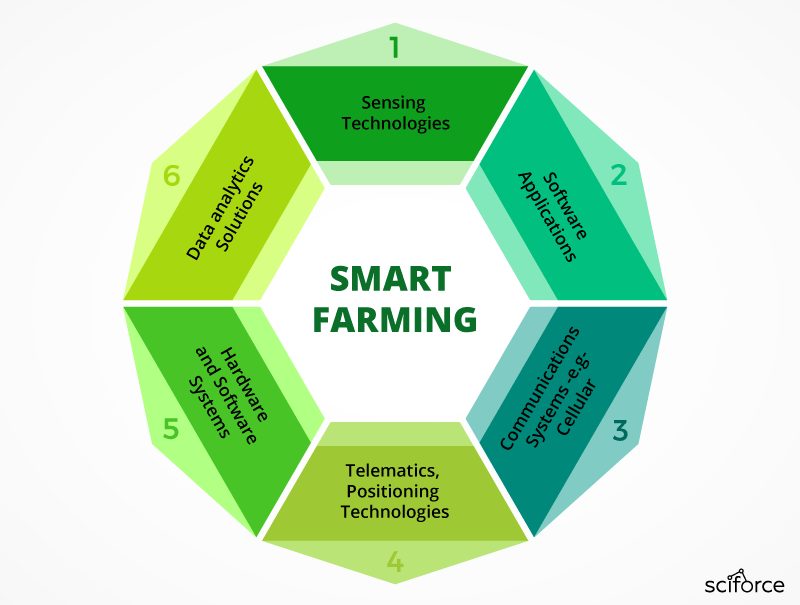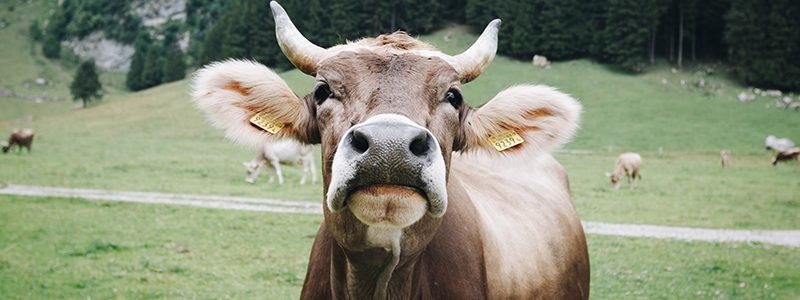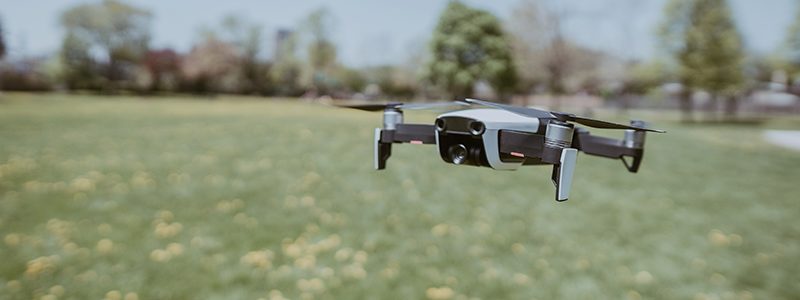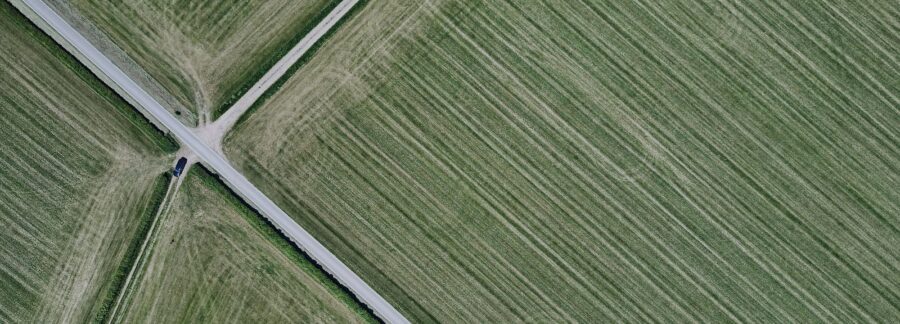We are a Ukraine-based company which means that our parents and grandparents lived in the era of infamous Soviet collective farms, where tractors were considered to be an ultimate technology. For them, a smart farm will sound like a fairy tale.
So let it be, a fairy tale of a smart farm.
First of all, what is a smart farm?
Smart Farming is a concept of farming management using modern Information and Communication Technologies to increase the quantity and quality of products.
Among the technologies available for present-day farmers there are
- Sensing technologies, including soil scanning, water, light, humidity, temperature management;
- Software applications — specialized software solutions that target specific farm types;
- Communication technologies, such as cellular communication;
- Positioning technologies, including GPS;
- Hardware and software systems that enable IoT-based solutions, robotics and automation; and
- Data analytics, that underlies the decision making and prediction processes.

Technologies involved in smart farming, according to Beecham Research
Armed with all possible tools, farmers can monitor the field conditions without even going to the field and make strategic decisions for the whole farm or for a single plant.
The driving force of the smart farming is the IoT — the concept of connected smart machines and sensors integrated on farms to make farming processes data-driven and data-enabled.
IoT-based farming cycle:
The core of the IoT is the data — and more data. To optimize the farming process, IoT devices installed on a farm should collect and process data in a repeated cycle that enables farmers to quickly react to emerging issues and changes in ambient conditions.
Observation — sensors record observational data from the crops, livestock, the soil or atmosphere.
Diagnostics — the sensor values are fed to specific software with predefined decision rules and models that ascertains the condition of the examined object and any deficiencies or needs.
Decisions — after issues are revealed, the software determines whether location-specific treatment is necessary and if so, which.
Implementation — the treatment needs to be performed by means of the correct operation of machines.
After evaluation, the cycle repeats from the beginning.
Applications of IoT in agriculture
It is believed that the IoT can add value to all areas of farming from growing crops to forestry. In this blogpost, we’ll talk about two big spheres where IoT systems can revolutionize agriculture: precision farming and farming automation/robotization.
Precision Farming
Precision farming, or precision agriculture, is an umbrella notion for IoT-based approaches that make farming more controlled and accurate. In simple words, plants and cattle get precisely the treatment they need, determined with great accuracy. The biggest difference from the classical approach is that precision farming allows decisions to be made per square meter or even per plant/animal rather than for a field.
By precisely measuring variations within a field, farmers can boost the effectiveness of pesticides and fertilizers, or use them selectively.
Precision Livestock Farming
Like in the case of precision agriculture, Smart Farming techniques, enable farmers to better monitor the needs of individual animals and adjust their nutrition correspondingly, thereby preventing disease and enhancing herd health.
Besides, large farm owners can use wireless IoT applications to monitor the location, well-being, and health of their cattle. With this information they can identify animals that are sick so they can be separated from the herd, and prevent the spread of disease.

Automation in Smart Greenhouses
Traditional greenhouses control the environmental parameters through manual intervention or a proportional control mechanism which often results in production loss, energy loss, and increased labor cost.
And IoT driven smart greenhouse intelligently monitors as well as controls the climate, eliminating the need for manual intervention. To do so, different sensors that measure the environmental parameters according to the plant requirement are used and store it in a cloud for further processing and control with minimal manual intervention.
Agricultural Drones
Agriculture is one of the major industries to incorporate both ground-based and aerial drones for crop health assessment, irrigation, crop monitoring, crop spraying, planting, soil and field analysis and other spheres.
Since drones collect multispectral, thermal, and visual imagery during the flight, the collected data provide farmers with insights into plant health indices, plant counting and yield prediction, plant height measurement, canopy cover mapping, field water ponding mapping, scouting reports, stockpile measuring, chlorophyll measurement, nitrogen content in wheat, drainage mapping, weed pressure mapping, and so on.
Importantly, IoT-based smart farming targets not only large-scale farming operations, but can also add value to growing trends in agriculture like organic farming, family farming, including breeding particular cattle and/or growing specific cultures, preservation of particular or high quality varieties etc., and enhance highly transparent farming to consumers, society and market consciousness.

Internet of food and farm 2020
If we have the Internet of Things and the Internet of Medical Things, why not have one for food? The European Commission project Internet of Food and Farm 2020 (IoF2020), a part of Horizon 2020 Industrial Leadership, explores through research and regular conferences the potential of IoT technologies for the European food and farming industry.
It is believed that the potential of a smart web of sensors, actuators, cameras, robots, drones, and other connected devices brings an unprecedented level of control and automated decision-making and makes it possible to build a lasting innovative ecosystem.
Third Green Revolution
Smart Farming and IoT-driven agriculture pave the way for what can be called a Third Green Revolution.
Following the plant breeding and genetics revolutions, the Third Green Revolution is taking over the agriculture based upon the combined application of Information and Communication Technologies such as precision equipment, the Internet of Things, sensors and actuators, geo-positioning systems, Big Data, Unmanned Aerial Vehicles (UAVs, drones), robotics, etc.
In the future depicted by this revolution, pesticide and fertilizer use will drop while overall efficiency will be optimized. IoT technologies will enable better traceability of food which in turn will lead to increased food safety. It will also be beneficial for the environment, for example, through more efficient use of water, or optimization of treatments and inputs.
Therefore, Smart Farming has a real potential to deliver a more productive and sustainable agricultural production, based on a more precise and resource-efficient approach. New farms will finally realize the eternal dream of the mankind and feed our growing population that may reach 9.6 billion by 2050.

